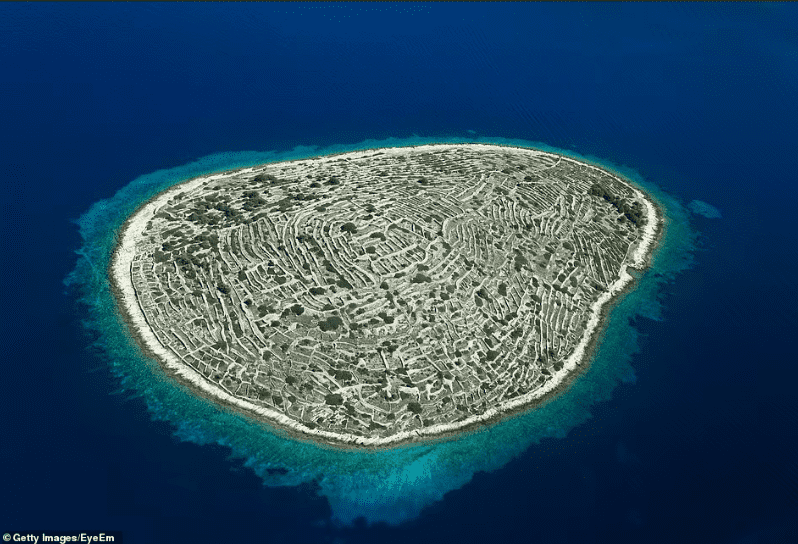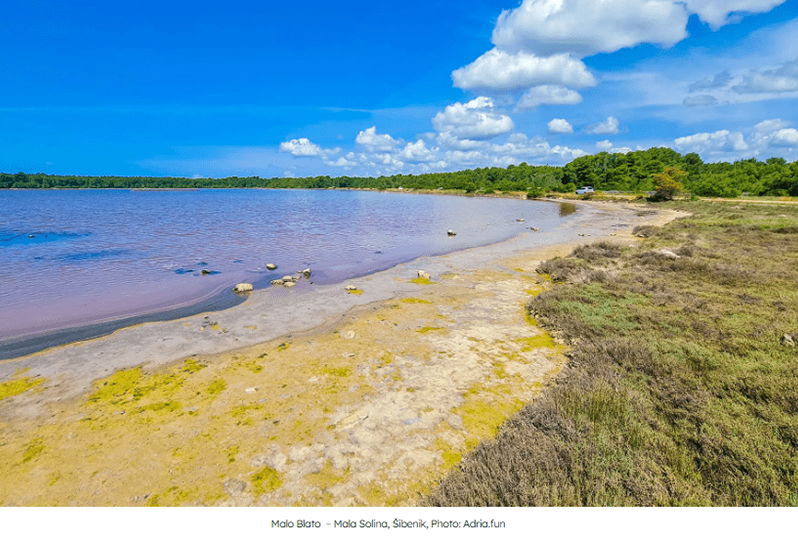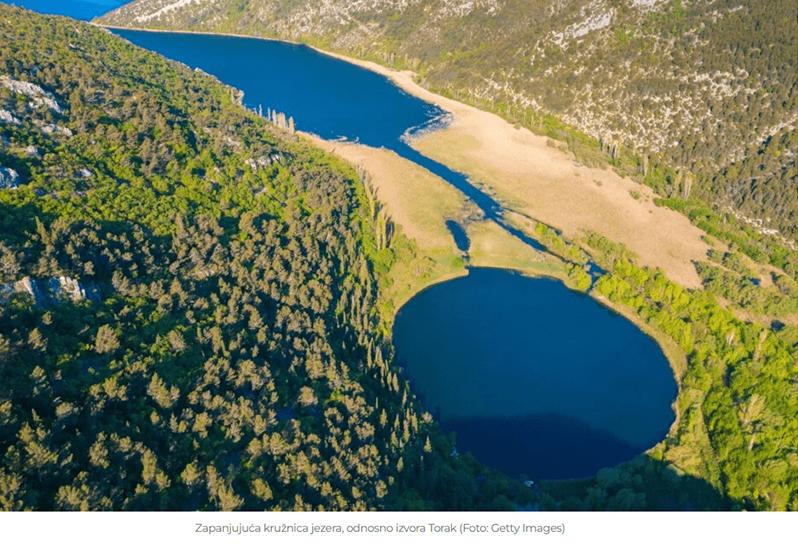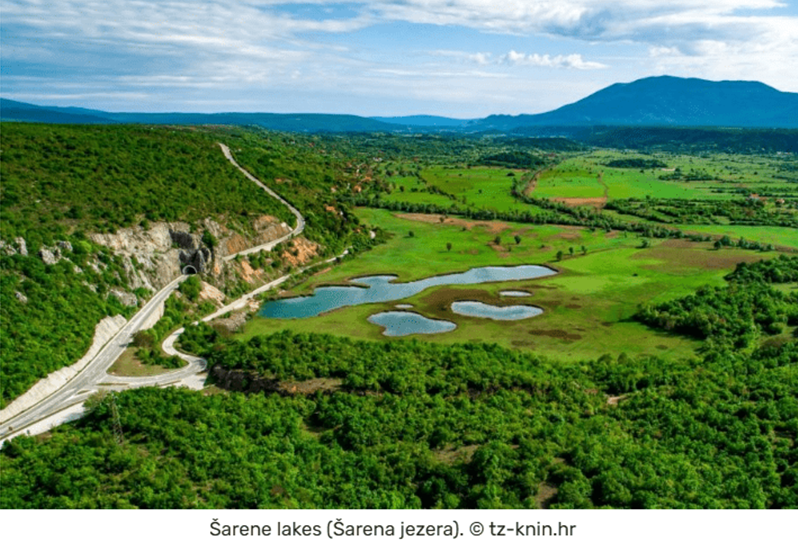Water phenomena of Šibenik-Knin County: Hidden natural wonders in karst and sea
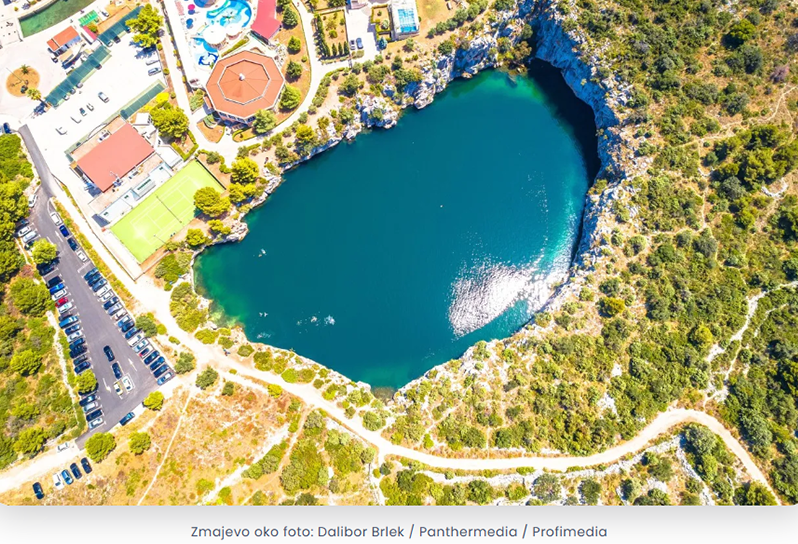

Šibenik-Knin County, known for its rugged coastline and rich natural heritage, harbours some of Croatia’s most unusual and fascinating water wonders. In this region, which boasts the smallest and coldest river in the world and where a city was built on seven rivers, —water shapes the landscape in extraordinary ways— and holds breathtaking phenomena: from an island in the shape of a fingerprint to colour-changing lakes, disappearing marine habitats, and springs that resemble lakes. Šibenik-Knin County offers much more than traditional coastal tourism. Its water phenomena tell stories of the coexistence of man and nature, of legends, science, and rare events that are worth exploring and experiencing. From pink lakes to islands in the shape of fingerprints, every corner of this county has something special to offer.
Island in the shape of a fingerprint – Bavljenac – In the Šibenik archipelago, near the island of Kaprije, lies the tiny island of Bavljenac, which is only 0.14 square kilometres in size. Despite its small size, this islet harbours a big surprise — its shape resembles a human fingerprint. Over the years, the inhabitants of Kaprije planted vines and Mediterranean fruits here, and transformed the islet into a natural art installation by building a network of dry stone walls. These dry stone walls still stand today as witnesses to times gone by and the hard-working hands that built them.
Pink lake in Zablaće – Mala Solina In the village of Zablaće, south of Šibenik, lies a shallow saltwater lake of an unusual pink colour — known as Mala Solina. This unique colour is the result of the high salt content and the presence of specific microorganisms. The lake has a muddy bottom and is a natural phenomenon that attracts attention due to its striking appearance.
The Dragon’s eye – the mysterious lake in Rogoznica One of the most famous and mysterious phenomena in the county is the Dragon’s Eye (Zmajevo oko) — a saltwater lake in Rogoznica, that is connected to the sea by a cave, the Dragon’s Ear (Zmajevo uho). It is a place rich in legends and scientific interest. From time to time, all of the lake’s sea creatures — fish, jellyfish, and even turtles — suddenly leave the lake through the cave passage, only to return once the water has been naturally purified. Scientists refer to the lake as a natural bioreactor due to the complex biochemical processes that take place in it.
Torak – a lake-like spring at the confluence of rivers In the Šibenik hinterland, at the confluence of the Krka and Čikola rivers, lies a phenomenon that looks like a lake, but is actually a karst spring. It is Torak, a spring with a diameter of 150 metres and a depth of up to 30 metres. Although it looks like a lake, Torak is a freshwater spring that once supplied many settlements in the south-eastern part of the district. Its lake-like appearance is the result of the partial damming of the Krka and Čikola rivers after the formation of the travertine dam at Skradinski Buk.
Colourful lakes – changing hues throughout the day In the heart of Knin — a town known for its seven rivers — lie the Colourful Lakes (Šarena jezera), bodies of water that change colour depending on the position of the sun. The play of light and water creates magical scenes, especially in the early morning and late afternoon. This natural beauty offers a unique experience for visitors and moments of tranquillity for the local population.
